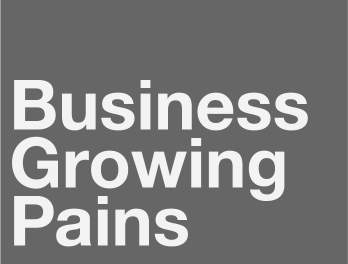
Andrew Brabant
What is a brand story?
A brand story is a compelling strategy that encapsulates the facts and emotions that your brand or business creates.
Unlike conventional ads, a story must provoke an emotional response, which focuses on showing and telling about your brand. The story relays how you understand your ideal customer and their psychographic beliefs, what they stand for and how you either a) fix a problem or remove a pain point or b) improve their status.
Your product, price, history, quality, marketing, in-store experience, intent, values, place, and–most importantly–what other people think about you are all factors that can affect your brand.
The complex art of consciously shaping your brand is referred to as branding. A brand may develop an identity that distinguishes itself from the competition and establishes a link with its audience through imagination, expertise, and strategy. Branding is what gives you a name and, most importantly, a future.
If your goal is to grow revenue, developing your brand story can help you take it to the next level from startup to small business or small business to growth engine.
Even without a large marketing budget, great brand stories allow smaller retailers to attract new customers.
Cassandra Rosen, branding specialist and co-founder of FK Interactive, a brand marketing and public relations firm, says, “Effective branding can either persuade a consumer to purchase from you or your competition.” “If they’ve never bought from you before, it’ll be your branding and story that convinces them to try your brand.”
How Does Story Brand Apply to Market?
People have limited attention spans, have busy schedules, and have no patience. They don’t have the time or inclination to find out what you’re saying, what you’re offering, or how to obtain it. You have a lot of competition no matter what market you’re in, and there’s no need for potential customers to waste their time with your company if you’re not sure how you can support them right away.
Take the example of RXBAR Real Food Protein Bar. In a market already flooded with protein bars and supplements, RXBAR entered the market with a product and a story specifically for their ideal customer; Crossfit junkies looking for a pre workout protein fix that was clean and simple and tasty.

Connect with customers
Customer’s interact and purchase from your brand if as long as you do one of two things.
- Take away their pain point – Basically if you solve a problem for your ideal customer or move them further away from pain and are able to convey that in your messaging, then you have connected with your customer and they will engage with your brand. Hopefully in the form of purchasing your product or service and then promoting it to their friends or followers who are also in your ideal customer audience.
- Improve their status – This applies nicely to luxury goods but also relates to how the consumer thinks about themselves
- consumer may purchase a cookbook, not because it removes their pain point and shows them how to cook so they can feed themselves, but they want to impress their friends by being able to cook them a meal or a dish that boosts the way that their friends think about them.
If we take the example of a client of mine who is a landscaper. His original marketing efforts were aimed at the customer’s pain point. They had a garden that was looking untidy and needed updating and maintenance or they had a garden that was hard to maintain and needed better soils, plants and irrigation. This approach worked to some extent, however there was no consideration of who his ideal customer was and what they wanted. This was all about possible pain points for anyone with a garden.
It turned out that his expertise was formal landscapes and french styled garden design. His ideal customer was married women aged 35 to 65 with part time jobs, children, dogs and a luxury european car living in 12 identifiable suburbs. Their ambition for their garden was not pain removal but improving their status. As part of their psychographic makeup they considered themselves visible in the community or school community and when they entertained, it was important that after they had finished renovating or building their large home, that the garden had all the wow factor to match. They want people to know that they had tasted and the means to mold the landscape around them.
As soon as we change the marketing messaging to: Creating a landscape to match the style of their home and impress visitors with their bespoke garden. The campaign started to kill it and he was able to quote top dollar for his design and expertise and an end result that enabled his business to grow in a way that he had been trying to do for a decade.

The more that you impress and show love to your customers, the more they will provide you with reviews and feedback on your product or service. Your job is to listen to this feedback and use it to improve.
Don’t listen to anyone who is not your ideal customer. This feedback is not valuable. A bit like a 50 year old telling you that the Disney Channel sucks. Not valuable as they are not the target audience.
Good feedback is gold however. It allows you to improve features, customer service, design and usability. Think of this a bit like creating a prototype and your customers are investing in your business to make it more successful.
WAYS TO GAIN CUSTOMER TRUST AND BOOST SALES:
My favorite book on this is ‘Delivering Happiness’ by Tony Hseih the co-founder of Zapios, in which he said this:
“We must never lose our sense of urgency in making improvements. We must never settle for “good enough,” because good is the enemy of great,”
Consumers today are becoming more savvy, selective, and cynical in their buying decisions. According to HubSpot research, more than half of consumers (55 percent) now have less confidence in companies than they did previously.
Business growth is dependent on reputation. The more people that like or lave your brand, the better your reviews and the more easily that new or cold traffic will engage and trust your brand.
One of the most profitable soft assets your business can gauge is your reputation

1: Tell your story, but make them believe it can be theirs.
Just remember that in your messaging you are not the hero of the story. You should only be the messenger or the mentor. For the consumer to engage they need to be the hero of their own journey.
You’re on your way to creating a brand that people can connect with if you can communicate your brand’s background, experience, and awards. One that is admired for its integrity, ideals, and approach.
2: Create a Customer Persona:
In order to understand your ideal customer, you need to create a buyer persona for them. A buyer persona is a profile of who they are, what they do, what they like and what compels them to take action. We can break this into the following elements:
- Demographics – Related · Age. · Gender. · Income. · Education. · Marital Status. · Employment. · Home Ownership – background and upbringing
- Geographics – Nation, Language, cultural values
- Psychographics – qualitative approach to studying consumers based on psychological characteristics such as values, desires, goals, interests, and lifestyle choices.
Making a buyer persona will assist you in defining and analysing your ideal customer. It allows you to most importantly marry your message to their needs and desires.
3: Make it relevant to what you’re offering:
Your product should have the following features:
- Resolve ALL of the issues that contributed to the creation of your brand.
- Provide a competitive advantage over the competitors’ goods (price, quality, USP)
- Second, state your goal and why you’re doing it.
4: Create a brand statement that they can align with.
This statement should be known and understood by all your staff and should be used on your website and social media.
If I was going to create a brand statement for my entrepreneur coaching business, I would:
- Identify my ideal customer – Hard working professionals, whose careers had stalled and are looking for a new direction
- Identify what I do – teach them to build their own consulting business
- Identify how I do it – provide simple step by step coaching on how to start their own coaching business.
- Be specific about the goal
My brand statement would be something like:
‘At Worklife Mentors, we teach hardworking professionals wanting to start their own successful coaching business a step by step approach to launch their business and make it profitable in 30 days by providing done for you marketing, website, course design and coaching methodology that you can apply to the skills you want to coach’.
With this type of brand statement, there is complete clarity of whether this is for your target audience and if it can help them.

5: Make it More Real and Less Reel:
”STORYBRAND PRINCIPLE ONE: THE CUSTOMER IS THE HERO, NOT YOUR BRAND.
When we position our customer as the hero and ourselves as the guide, we will be recognized as a trusted resource to help them overcome their challenges. Positioning the customer as the hero in the story is more than just good manners; it’s also good business.” Donald Miller – Building A Storybrand – Book
Being unrealistic is the worst mistake you can make when creating a brand narrative. Many businesses fabricate brand tales in order to evoke empathy from their target audience. It’s naive to believe that people can’t tell the difference between a fake and a real story.
A badly written brand story can do more harm than good to your business. It would permanently blacklist you in the eyes of your customers. That is why it is important to be as open and honest as possible.
Conclusion
I have compiled a few books that have helped me in working out who my ideal customers are for the different businesses that I work with and in.
I place these elements as the top 10 things that will help you build a brand that resonates with your ideal customer:
Work out who your ideal customer / niche is.
Find out through interviews, research and survey what they are looking for.
Design a product or service that fixes the problem or improves their status.
Understand what your USP (Unique Selling Proposition) is.
Create your brand statement – what you do, who you do it for and how you do it.
Engage a professional to design your logo and style guide – this is a trust signal and should resonate with your ideal customer on your advertising, website and all brand collateral.
Build a website and Facebook page that speak to your brand and ideal customer.
Engage a professional copywriter to write in the tone of your brand for website and social media.
Find out what your ideal customers like about your brand and what they would like to see as an improvement.
Listen to your ideal customer, they will tell you what you need to change to be more successful.
Final note: Any time I see a product or service struggling, I see a brand disconnected from its ideal customer.

Related Articles
TOP 10 CAUSES OF BUSINESS GROWING PAINS
TOP 10 CAUSES OF BUSINESS GROWING PAINS 1. Lack of Product Market Fit - Product market fit is the relationship between your products and services and your market. It is the gauge the venture capitalists look at a prospective investment to see whether it has identified...
What is Product Market Fit & Why is it so Important?
creating a business strategy for your online business or bricks & mortar business should be similar evaluate plan and engage with experts. They can point out the holes in your strategy allowing you the room to develop it further.
Habit Creation For Business Success
Relying on motivation and passion to build your business is exhausting and unreliable. Building habits around your tasks and work output will ensure you complete what you set out to achieve.
Follow Us
Subscribe For Updates & Offers
Lorem ipsum dolor sit amet, consectetur adipiscing elit. Aenean scelerisque suscipit condimentum. Vestibulum in scelerisque eros. Fusce sed massa vel sem commodo.


